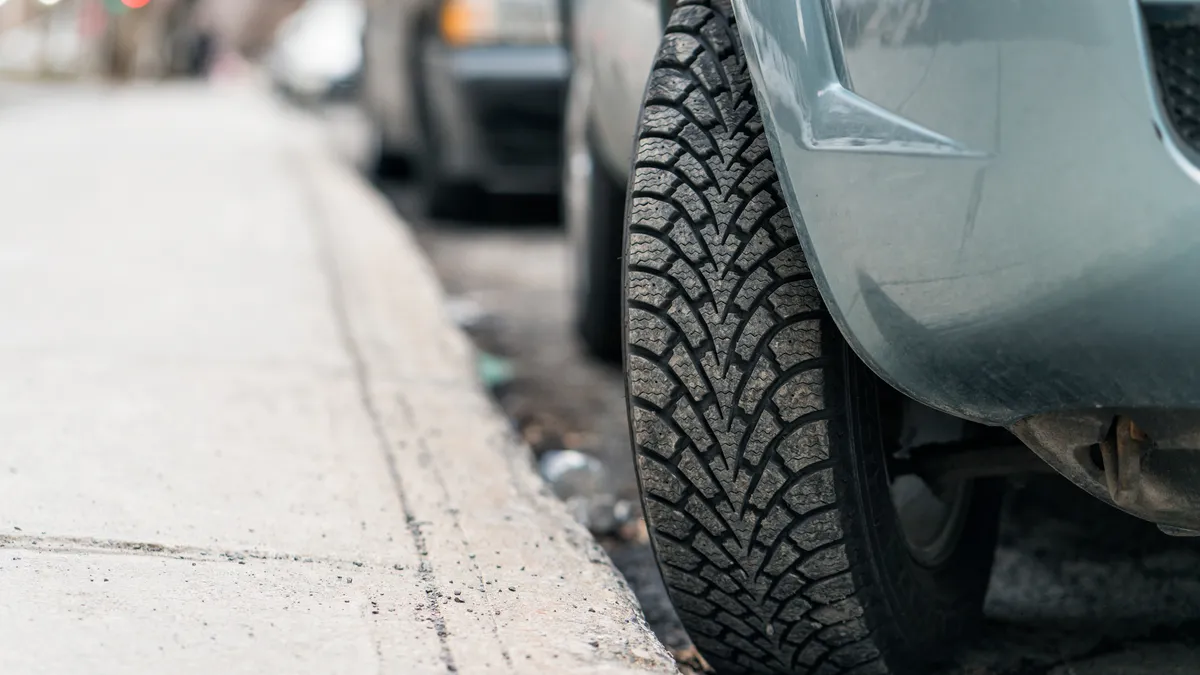Cities are implementing “smart loading zones” to address the growing competition for curb space, driven largely by increasing online orders, ride-sharing, outdoor dining, micromobility needs and open streets efforts.
What makes the zones smart? These designated areas for delivery drivers to load and unload goods are managed by telecommunications and advanced monitoring systems that allow authorized drivers to reserve a space for a limited amount of time through a smartphone app or other mechanism. Other cities are increasing incentives for electric or human-powered delivery vehicles by implementing zero-emission delivery zones.
While such efforts can encourage more orderly curbs, cities have encountered implementation challenges including local business pushback, technical challenges and regulatory barriers.
Here’s what experts and city officials experimenting with curb management strategies say they’ve learned to date.
Pittsburgh’s gradual SLZ roll-out
In 2021, Pittsburgh received a $100,000 grant from the Department of Energy to establish 20 smart loading zones, said David Onorato, executive director of the Public Parking Authority of Pittsburgh, which oversaw the project.
In the first year, the city installed cameras and focused on collecting data on how drivers were using the zones, rather than on enforcement. The information was “eye-opening,” Onorato said. There were numerous instances of vehicles double-parking or parking longer than the 30 minutes of free parking allowed in many parts of the city, he said.
When the SLZs went into effect, some restaurants worried their customers would have to pay just to pick up to-go orders. “We heard their concerns and adjusted the rates,” Onorato says. The first 15 minutes are now free, after which the city charges in 15-minute increments.
The city recently extended the SLZ contract until 2024 and for up to a total of 200 smart loading zones. “Change is always tough,” Onorato said. “But this technology today makes our operation more efficient.” Getting buy-in upfront will help the success of the program, he added.
Factors to consider
Effective smart loading zones need scalable technology solutions that work across large delivery companies, local shops and gig workers, said Robert Ferrin, parking and mobility practice lead with engineering, planning and design firm Kimley-Horn. Looking at the on-site technology, because so much computer processing occurs within the camera itself, it needs to be connected by wire to a power source. “This can be problematic in a public right-of-way,” he said.
One option is for the devices to draw power from the streetlight poles they are often mounted on, he said. However, that is a less viable option as cities move toward sustainable and smart streetlights that may not have power during daylight hours. “We are starting to see some battery backup on some cameras for the daytime, but there are infrastructure limitations there as well,” Ferrin added.
Any SLZ should be part of “a comprehensive curb space management strategy” that includes the business community, neighborhood associations and relevant government agencies, like those deploying bike lanes, Ferrin said.
When collecting data from the SLZ, a transparent information management approach is critical, Ferrin said. Residents need to know what data is collected and how it’s stored and used.
Cities also need to retain accessible parking for individuals with disabilities. “If you get rid of on-street parking, many [individuals with disabilities] don’t have the luxury of parking several blocks away and then walking,” said Lisa Nisenson, vice president of new mobility and connected communities with engineering firm WGI.
Overcoming regulatory roadblocks
Regulation is another challenge. “We're trying to manage the public right-of-way with policies and legislation that are 30, 40 or 50 years old,” said Roamy Valera, president of Automotus, which develops curb-management solutions. For instance, existing legislation may lack clear guidance on whether a city can take a portion of the public right-of-way and turn it into a smart loading zone, he said.
Further, some states prohibit the use of automated license plate recognition technology for enforcing smart loading zones, Kimley-Horn’s Ferrin said.
Potential climate benefits
Smart loading zones aren’t just about reducing curb congestion; cities may also implement them to reduce vehicle emissions.
In January 2021, Santa Monica, California, launched a zero-emission delivery zone pilot, designating 10 electric-vehicle-only loading zones in two corridors to create incentives for the use of EV delivery vehicles, said Trevor Thomas, senior transportation planner with the city.
The city partnered with e-bike cargo delivery companies to ensure the ZEDZs worked for their drivers, Thomas said. Independent of the ZEDZ pilot, Santa Monica had also worked to make streets more bike-friendly through painted and protected bike lanes, he added. According to feedback from the e-bike companies, these efforts have created a downtown streetscape that is more conducive to cargo e-bike delivery.
A larger hurdle, however, was identifying and procuring space for “micro-hub staging areas,” where the companies could break up large deliveries, Thomas said. Similar e-bike cargo operations have been the subject of pilots in Miami and New York.
Santa Monica also began piloting sidewalk robots that can transport deliveries, particularly of restaurant orders and grocery store items, in a lower-carbon way. “They’re not super transformative but are another arrow in the quiver,” Thomas says.
Non-EV drivers using the zones aren’t fined, as the municipal code doesn’t allow fines. “But this shows the city is prioritizing EVs,” Thomas said.
Santa Monica also is working with Automotus to gain curbside data. So far, the city has noticed that incidents of double-parking spike toward the end of the week, and particularly in the hour or so after midnight.
While the pilot officially ended in December 2022, the EV-only loading zones remain in place, and the delivery robots are still operating, Thomas said.
Santa Monica has not announced plans for new EV loading zones at this point, although city leaders say they are taking the knowledge they’ve gained through the pilot to examine potential strategies to manage downtown curb space, Thomas said. This could include further EV-incentivizing loading zones, he added


















